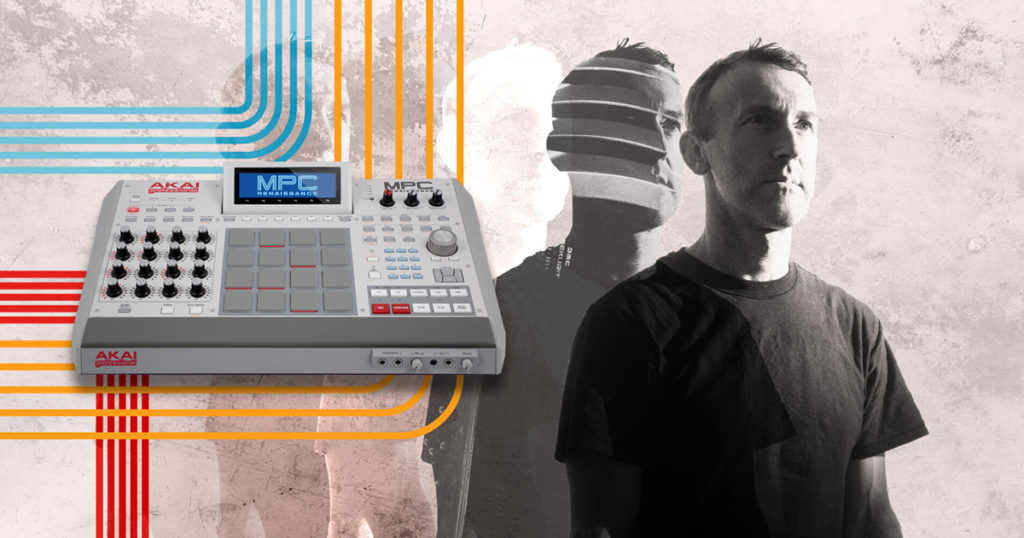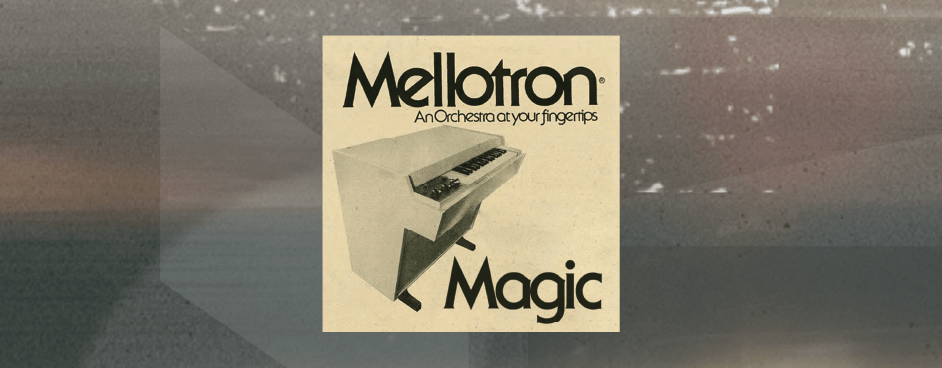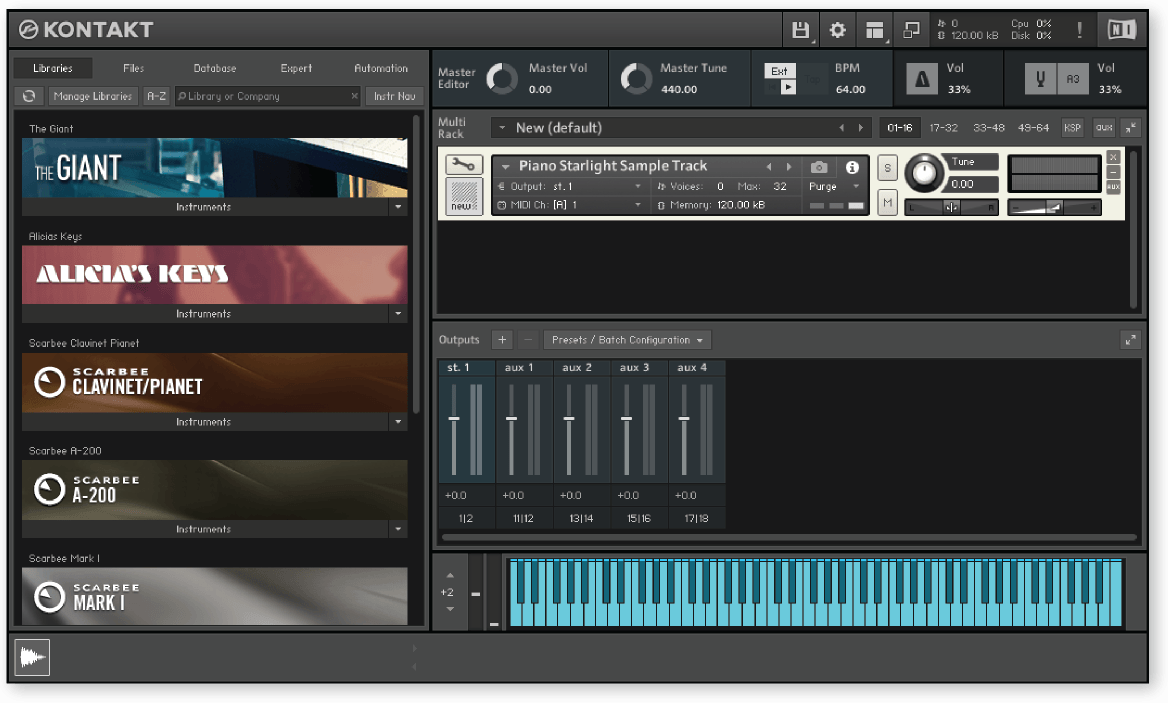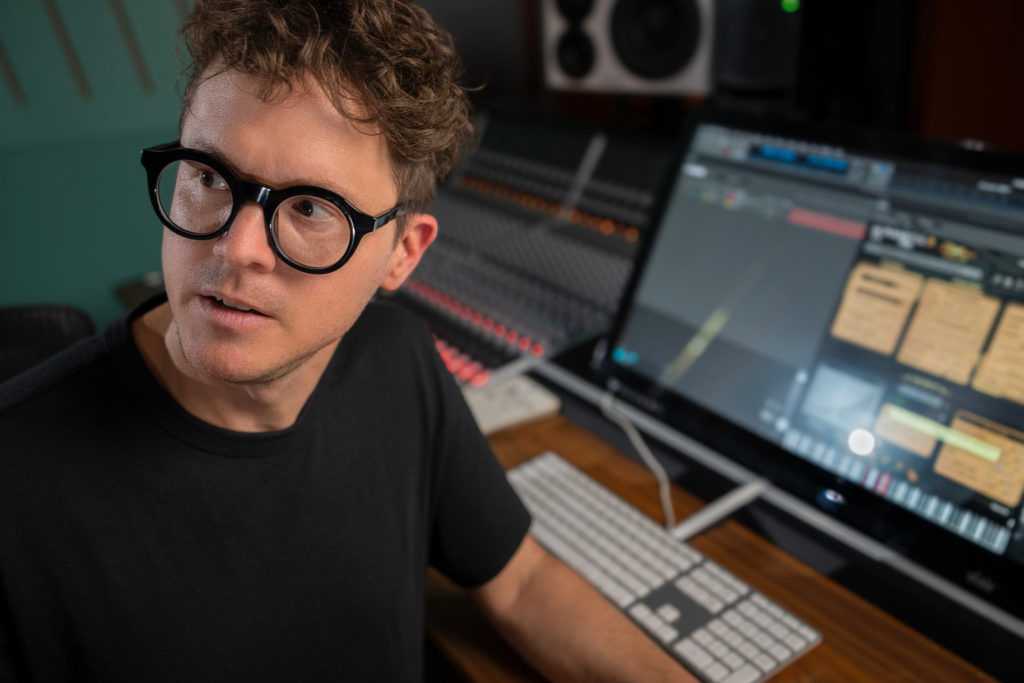+ Ryan Lott (of Son Lux) teaches how to build custom virtual instruments for sound design and scoring in Designing Sample-Based Instruments.
Throughout his new course on Soundfly, Ryan Lott (of Son Lux) explores the depth of his work using the sampler by Native Instruments, Kontakt.
But that’s just one popular software sampler out of many. Let’s get a quick sense of what a sampler is, how they work, and some of the options available to you.
What’s a Sampler?
In essence, a sampler is a tool that allows you to capture and manipulate audio recordings.
In instrumental hip-hop producer RJD2’s own Soundfly course, From Samples to Songs, he defines a sampler as something that can change the length of a piece of audio, in terms of how much of the audio is used, and the pitch of a sample, in terms of the frequency at which it’s played back.

Nowadays, with software samplers, there’s a lot more you can do than that, from adjusting the velocity of sample playback to adjusting the cutoff frequency on a sample like an oscillator.
Samplers tend to have a few core elements:
- Samples. Samples are what we call the audio recordings that are the raw materials a sampler draws on. It can be a single audio file or multiple related files collected in a library, like a violin patch where every pitch actually plays a different recording of a different violin note.
- An interface. The interface allows you to playback those recordings. Often this is a keyboard, but not always.
- Keymapping. You can connect the playback of samples to an interface so that playing a different note on your interface triggers a different sample or alters the pitch of the sample.
- Editing tools. These are various processors that allow you to manipulate the samples by filtering them, adding reverb, detuning them, etc.
Early Hardware Samplers

Samplers in popular music have taken a variety of forms. One of the earliest ones was the Mellotron, a keyboard-based instrument invented in the 1960s and made most famous probably from the opening sounds of The Beatles’ “Strawberry Fields Forever.”
In contrast to today’s digital samplers, each key on the Mellotron actually played back a real recording from magnetic tape. Every piece of audio is inviolable — you’re just ordering them in a specific way to create the music you want.
The Fairlight CMI was another early sampler (released in 1979) that allowed artists to invent in essence new instruments, but now using digital recordings of sound. The digital samplers were similarly mapped to a keyboard, just like we’re going to do in this course. Peter Gabriel, Stevie Wonder, and Kate Bush were a few of the artists who took advantage of this new technology.
In the 1970s and 1980s, sampling became a much bigger part of modern music, in particular with the birth of hip-hop. DJs and producers would sample loops or sounds from vinyl records, and flip or chop them into new songs. Portable samplers like the E-MU SP-1200 and AKAI MPC entered the market that met the growing demand and were more affordable.
These samplers also introduced new interfaces great for programming drum samples, like the now instantly-recognizable square buttons of the MPC.
The Move to Software
As more and more music production moved online, so did samplers and sampling. All DAWs allowed you to cut, move, and manipulate audio, but companies began inventing plugins to make it easier and more functional. Steinberg released the first Virtual Studio Technology (VST) in 1996, followed by the first VST instrument in 1999, which was a sample-based instrument that could be played in the DAW.
Kontakt was released soon afterward in 2002.
Most DAWs these days come with a built-in sampler plugin, although there are lots of downloadable options as well. Let’s take a quick look at some of the most popular software samplers being used today (any of which you can use while taking Ryan’s course).

Native Instrument’s Kontakt
As we mentioned, Ryan uses Native Instrument’s Kontakt throughout his course. In many ways it’s considered the industry standard for samplers. First released in 2002, it’s used by tons of professional film scorers and sound designers, and is the platform on which many companies have built their virtual instruments (VSTs), such as Spitfire and Output.
It’s great for being able to look behind the scenes of existing VSTs or inventing your own instruments. You’ll be seeing a lot more of Kontakt as you work through his course.
Ableton Live Simpler / Sampler
As Ableton Live has become one of the most popular DAWs, its built-in samplers — one called Simpler and one called Sampler — have also become more popular. Simpler is, unsurprisingly, more streamlined. Sampler offers a lot of the same functionality as Kontakt, but the interface is very different and unique to Live.
Logic Pro X Sampler / Quick Sampler
Logic Pro X also has two built-in samplers in the aptly named Sampler, and a smaller version called Quick Sampler. Both of these samplers replaced Logic’s original sampler plugin, the EXS24, in 2020.
Steinberg HALion
The HALion is another professional-grade sampling software, similar to Kontakt. It doesn’t have as much third-party content built for it as Kontakt does, but it does have the ability to create complex, intricate sounds using a variety of parameters. It’s another one you’re likely to find among film scorers and sound designers, and priced accordingly.
iZotope’s Iris 2
Later in the course, Ryan mentions iZotope’s Iris 2 as another great sampler option. One of the newer options on the list, but with a versatile interface and a lot of features that make it a fierce contemporary competitor.
Don’t stop here!
Continue learning with hundreds of lessons on songwriting, mixing, recording and production, composing, beat making, and more on Soundfly, with artist-led courses by Kimbra, Com Truise, Jlin, Kiefer, and the new Ryan Lott: Designing Sample-Based Instruments.





